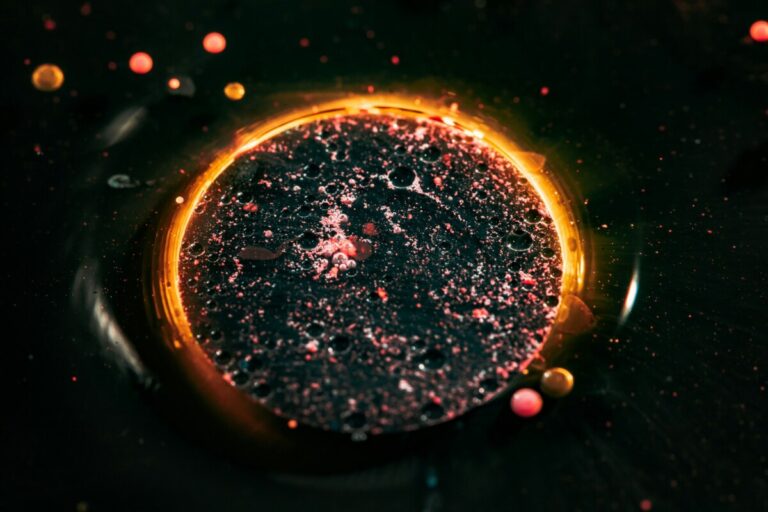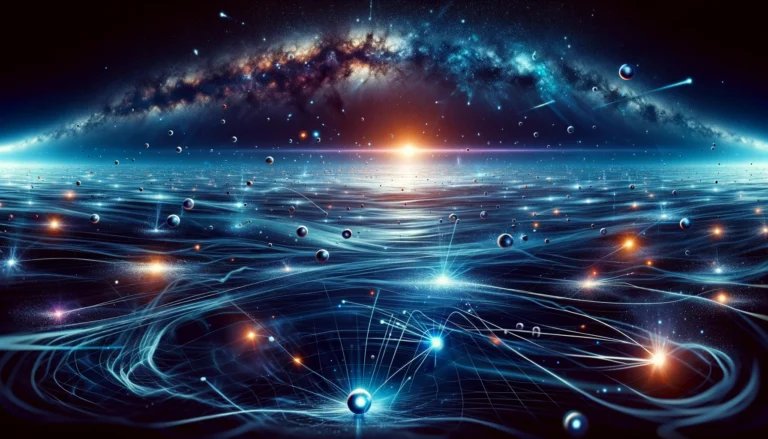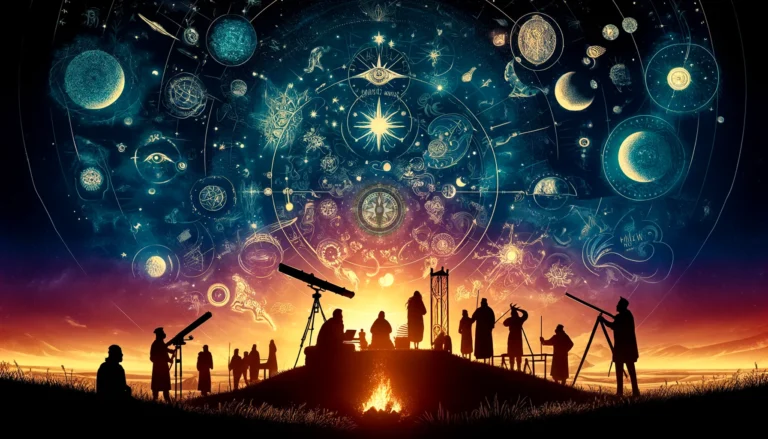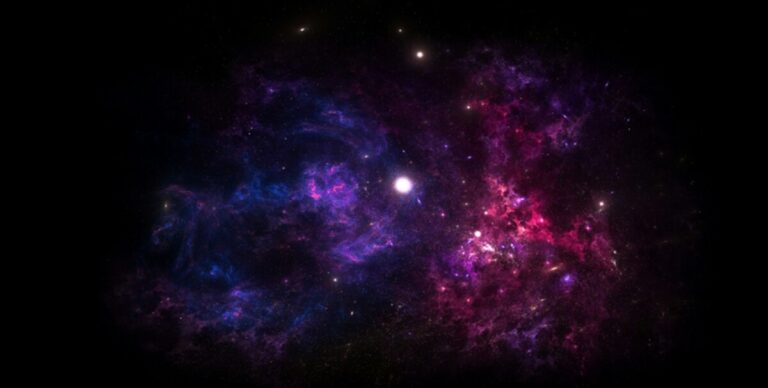The universe has always been a source of profound mystery and endless fascination. From the earliest civilizations gazing up at the stars to modern astronomers peering through telescopes at the edge of the observable cosmos, humanity has sought to understand the vast expanse that surrounds us. Yet, as much as we’ve learned, the true nature of the cosmos remains one of the greatest enigmas, sparking questions that stretch the limits of our imagination and scientific inquiry. One such speculative journey leads us to the concept of the “Islands-of-Universes,” a notion that invites us to reconsider our place in a potentially much larger cosmic landscape than we currently comprehend.
Expanding Our Cosmic Horizon
In our quest to unravel the mysteries of the cosmos, theories like the multiverse, bubble universes, and black hole cosmology have emerged, each suggesting that our universe may be just one of many. These ideas, grounded in the realms of theoretical physics and cosmology, propose a staggering possibility: that beyond the observable limits of our universe lies an expanse teeming with other universes, each with its own laws of physics, its own histories, and perhaps even its own forms of life.
The notion of an infinite or near-infinite cosmos, where universes exist like islands in a vast sea, challenges our understanding of space, time, and the very fabric of reality. It suggests that the Big Bang, the event that marked the beginning of our universe and its ongoing expansion, might not be a singular occurrence but rather a common phenomenon across a grander cosmic scale.

Weekly Wisdom Builder
Got 4 minutes a week?
A new 4-minute thought-provoking session lands here every Sunday at 3PM, emailed on Mondays, and shared throughout the week.
Exactly what the world needs RIGHT NOW!
Enter More Speculation: Islands-of-Universes
This brings us to a tantalizing speculation: what if the observable universe, with all its galaxies, stars, and planets, is merely a fragment of something much larger? The prevailing theory of the Big Freeze posits that the universe will continue expanding, leading to a cold, desolate future where energy is too dispersed for life or stars to exist. However, if we entertain the possibility of a cosmos filled with “Islands-of-Universes,” might there be more to the story?
Consider the implications: outside the cosmic microwave background (CMB) that bounds our observable universe, there could be vast reserves of galactic material, part of other universes that dot the cosmic landscape. These neighboring “islands” could theoretically contribute matter and energy to our universe, challenging the inevitability of the Big Freeze. This speculation not only offers a more hopeful outlook on the cosmic fate but also aligns with the idea that singularities—points of infinite density and temperature—could be gateways to new universes, birthing endless cycles of creation and discovery.
Imagining the Unimaginable
What if our universe, spanning 93 billion light-years, is merely a small patch within an incomprehensibly vast cosmos? This perspective suggests that our journey of discovery, from recognizing our sun as one among billions to understanding our galaxy as just one of countless others, is only beginning. It envisions a future where our knowledge expands to encompass the existence of multiple universes, each contributing to a grander and more complex cosmic tapestry than we ever imagined.
As we delve into the “Islands-of-Universes” concept, we stand at the frontier of speculation, where science merges with imagination. Although unproven, this idea prompts us to venture beyond our current understanding and to envisage the endless possibilities that the cosmos may hold. It reminds us that the universe, in all its mystery and splendor, likely harbors many secrets yet to be discovered.
A Cosmos Beyond Our Reach
What if vast amounts of galactic material exist beyond the cosmic microwave background (CMB)? Suppose there are other “islands-of-universes” that could supply our universe with additional galactic material. Would this not challenge the inevitability of the Big Freeze? Indeed, it might, though much would depend on the distance of these other universes from our own. Despite being speculative, this notion offers a less grim outlook, and with our current knowledge, it remains a plausible scenario.
Considering the Big Bang, could it be that such singularities are common throughout a universe much larger than we currently comprehend? Imagine a cosmos beyond the CMB, trillions of times larger, filled with “islands-of-universes” scattered across its expanse. Consider that when sufficient material gravitates together, it forms a black hole. What if the amalgamation of numerous black holes and other matter leads to what we term a singularity? Our known universe, at 93 billion light-years wide, might just represent a fraction of the galactic material within a vastly larger “universe” than we can currently observe. This scenario suggests that beings within such singularities would embark on a path of discovery similar to our own, from recognizing their star as one among many to eventually understanding their place within a broader cosmos.
Understanding the Universe’s Geometry
The exploration of the universe’s vast tapestry hinges on grasping its geometry—whether it’s open, closed, or flat. The universe’s curvature not only dictates its ultimate fate but also the nature of its expanse beyond what we can currently observe. According to the latest cosmological data, a flat universe implies an infinite expanse, extending endlessly in all directions, unlike the curved surface of a balloon.
In such a universe, the concept of “Islands-of-Universes” emerges as a fascinating speculative idea. It suggests that beyond the CMB, which delineates the boundary of our observable universe, lies a boundless cosmic ocean dotted with island universes. Each universe, potentially governed by its own physical laws, may have originated from singularities akin to our Big Bang.
This thought experiment invites us to conceive of a universe far more expansive than the realm revealed by the CMB—our universe’s oldest light, hinting at a cosmos 93 billion light-years wide yet potentially just a speck within an unimaginably vast cosmic ocean.
Though the “Islands-of-Universes” concept does not delve into other dimensions or parallel universes, it envisions a cosmos where Big Bang-like singularities periodically occur, giving birth to entire universes. These events, spread throughout a universe trillions of times larger than our observable domain, hint at a cosmos where our known universe might simply be a localized cluster within a colossal expanse.
Relation to and Divergence from Existing Theories
The “Islands-of-Universes” hypothesis resonates with, yet distinctively diverges from, traditional multiverse theories and notions of universes born from black holes. While multiverse theories typically spring from the complex mathematics behind inflationary cosmology, positing a plethora of causally disconnected “bubble universes,” the “Islands-of-Universes” hypothesis explores the tangible, observable ramifications of a cosmos brimming with interconnected universes. This perspective marks a departure from the deterministic Big Freeze scenario, proposing instead a dynamic cosmic landscape characterized by continuous singularities and the genesis of new universes.
This hypothesis beckons us to reimagine the universe not as a confined space bounded by the observable limits but as a realm of boundless exploration and discovery. It conceptualizes the peripheries of our known universe—not as the end of our cosmic journey but as doorways to a broader, more intricate cosmic narrative. Here, the cosmic microwave background (CMB) does not signify the boundary of existence but the threshold to our local cosmic neighborhood, nestled within a sprawling cosmic archipelago.
Although rooted in speculation, the “Islands-of-Universes” concept intriguingly complements the flat universe model. In a universe unfettered by curvature, the existence of myriad island universes emerges as a captivating possibility for theoretical investigation. This hypothesis encourages a profound contemplation of reality’s magnitude and the notion that our universe, in all its vastness and splendor, may merely be one among an enumerable collective, scattered throughout an even more expansive cosmic sea.















